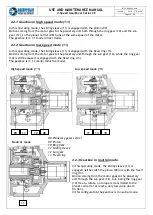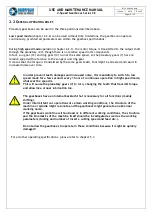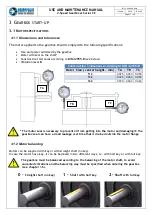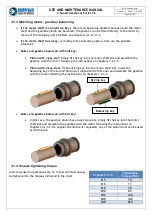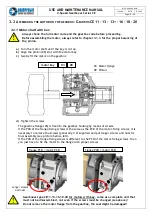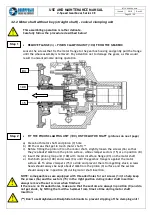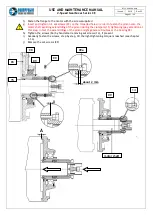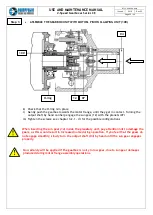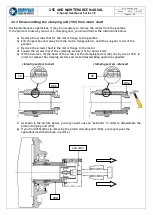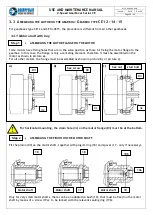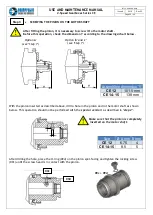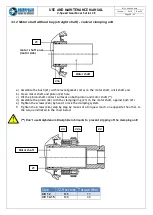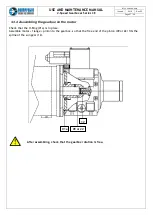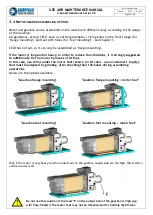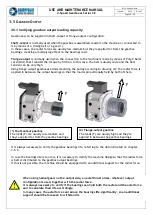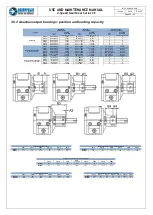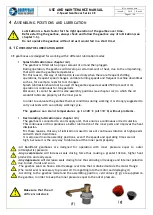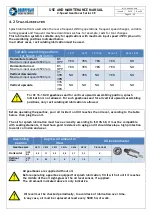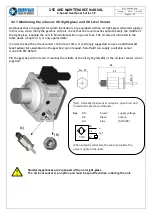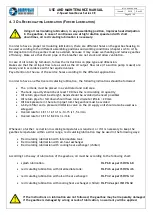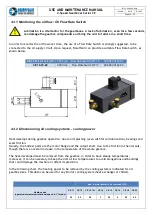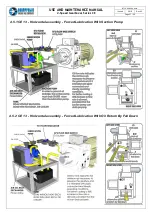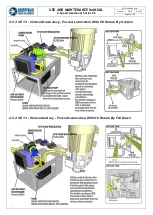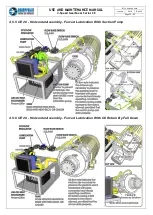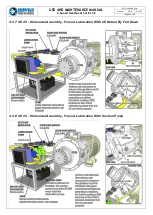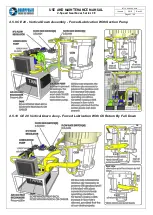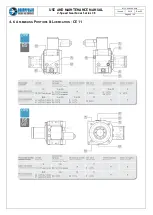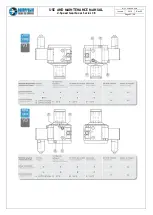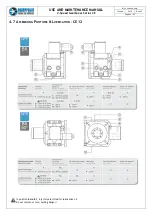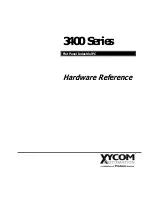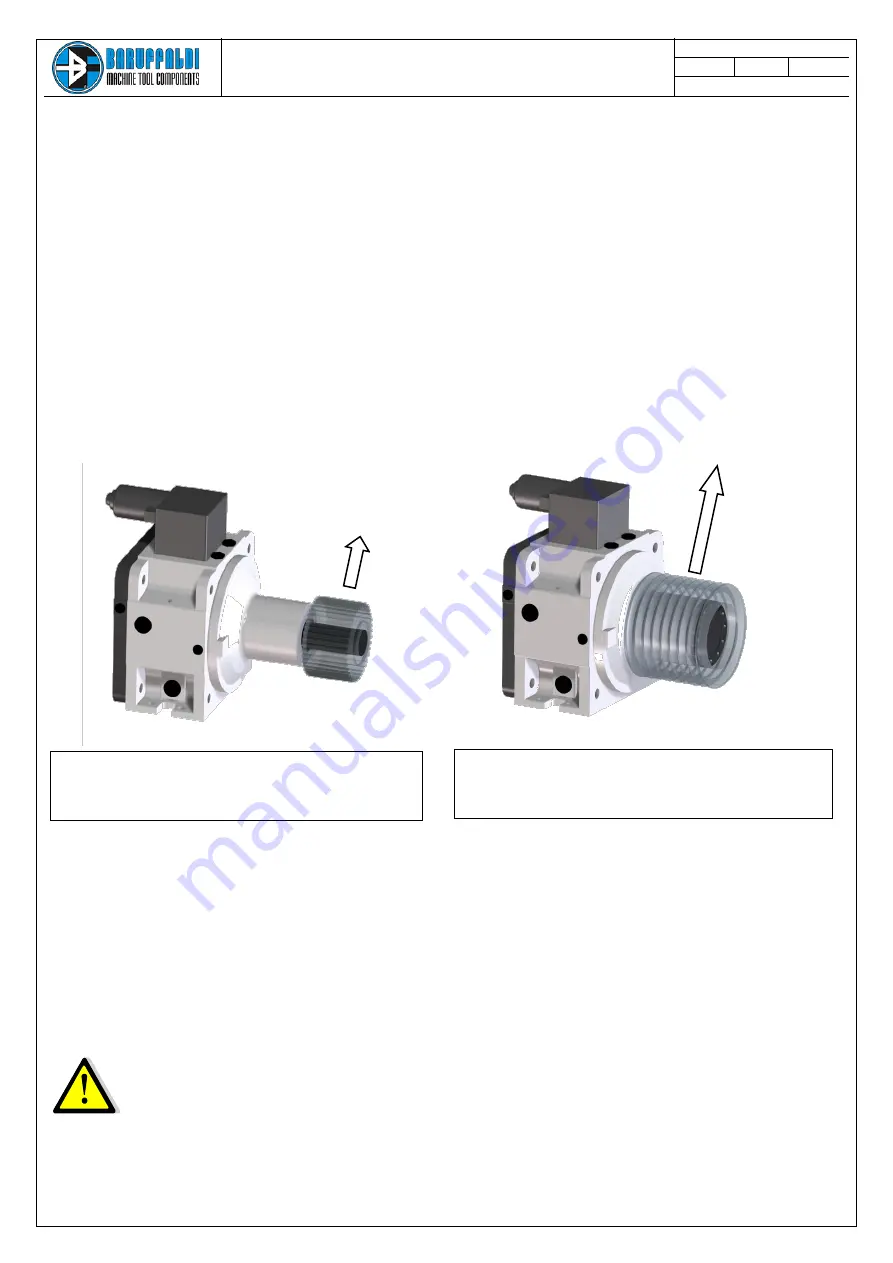
USE AND MAINTENANCE MANUAL
2-Speed Gearboxes Series CE
M
.CE.GEN.ENG.DOCX
Issued
2018
Rev.03
Page 29 / 59
3.5
G
EARBOX
O
UTPUT
3.5.1 Verifying gearbox output loading capacity
Gearboxes can be supplied in shaft-output or flange-output configuration.
Shaft-output
is normally used when the gearbox is assembled coaxial to the machine or connected to
it by means of a timing belt or a gear (1).
In these cases, the radial forces are usually low-medium but they're applied far from the gearbox
bearings, creating a multiplying effect on the bearings load.
Flange-output
is normally used when the connection to the machine is made by means of Poly-V belts
(or similar) that transmit the torque by friction. In this case, the belt is usually wide and the belt
tension can be very high.
Using flange output gearboxes allows mounting the pulley according to drawing (2): the radial force is
applied in between the output bearings so that the load is proportionally held by both of them.
It is always necessary to verify the gearbox bearings life, referring to the data indicated on chapter
3.5.2.
In case the bearings life is too low, it is necessary to modify the machine design so that the radial force
is better distributed on the gearbox output bearings.
If this is not possible, the machine should be equipped with an additional support for the radial force.
(1) Shaft-output gearbox
The loads (F) are usually low-medium and
they're applied far from the gearbox bearings.
(2) Flange-output gearbox
The loads (F) are usually high and they're
applied in between the gearbox bearings.
F
F
When using helical gears on the output side, an axial thrust arises, whatever output
configuration is used, together with the radial force.
It is always necessary to verify if the bearings can hold both the radial and the axial force
and to calculate their life accordingly.
In many cases, the axial force can reduce the bearings life significantly, so an additional
support should be foreseen to withstand it.

